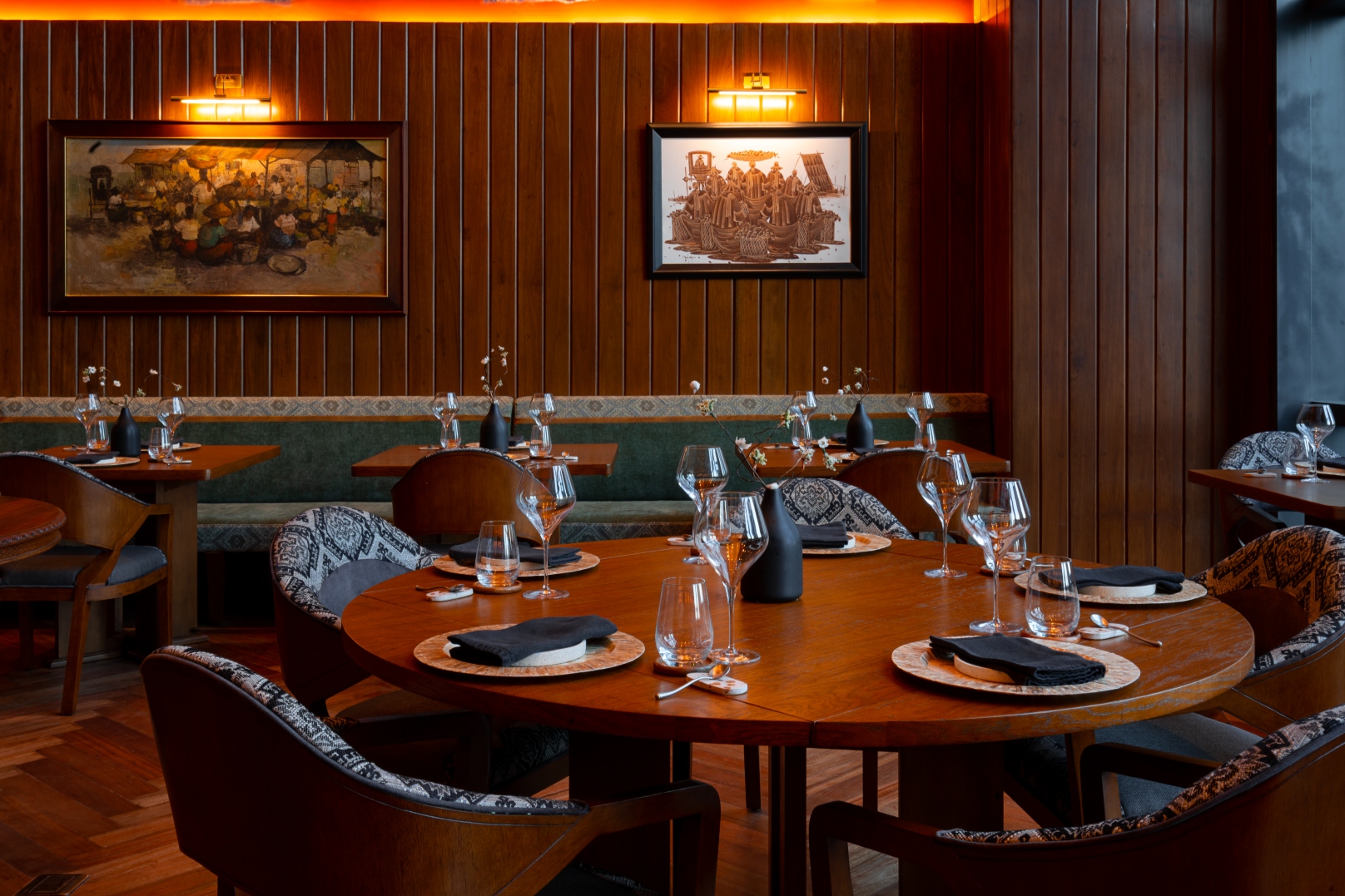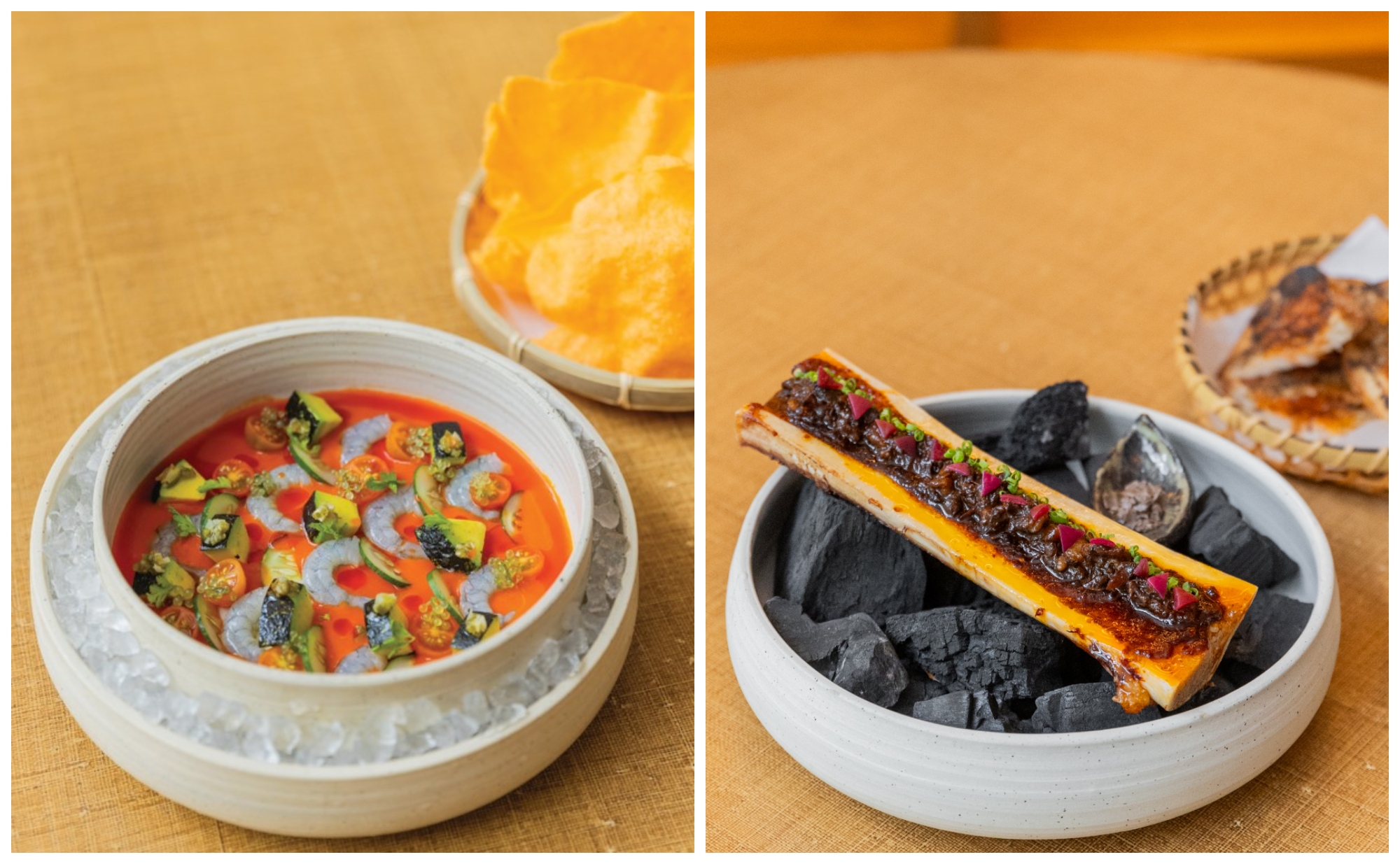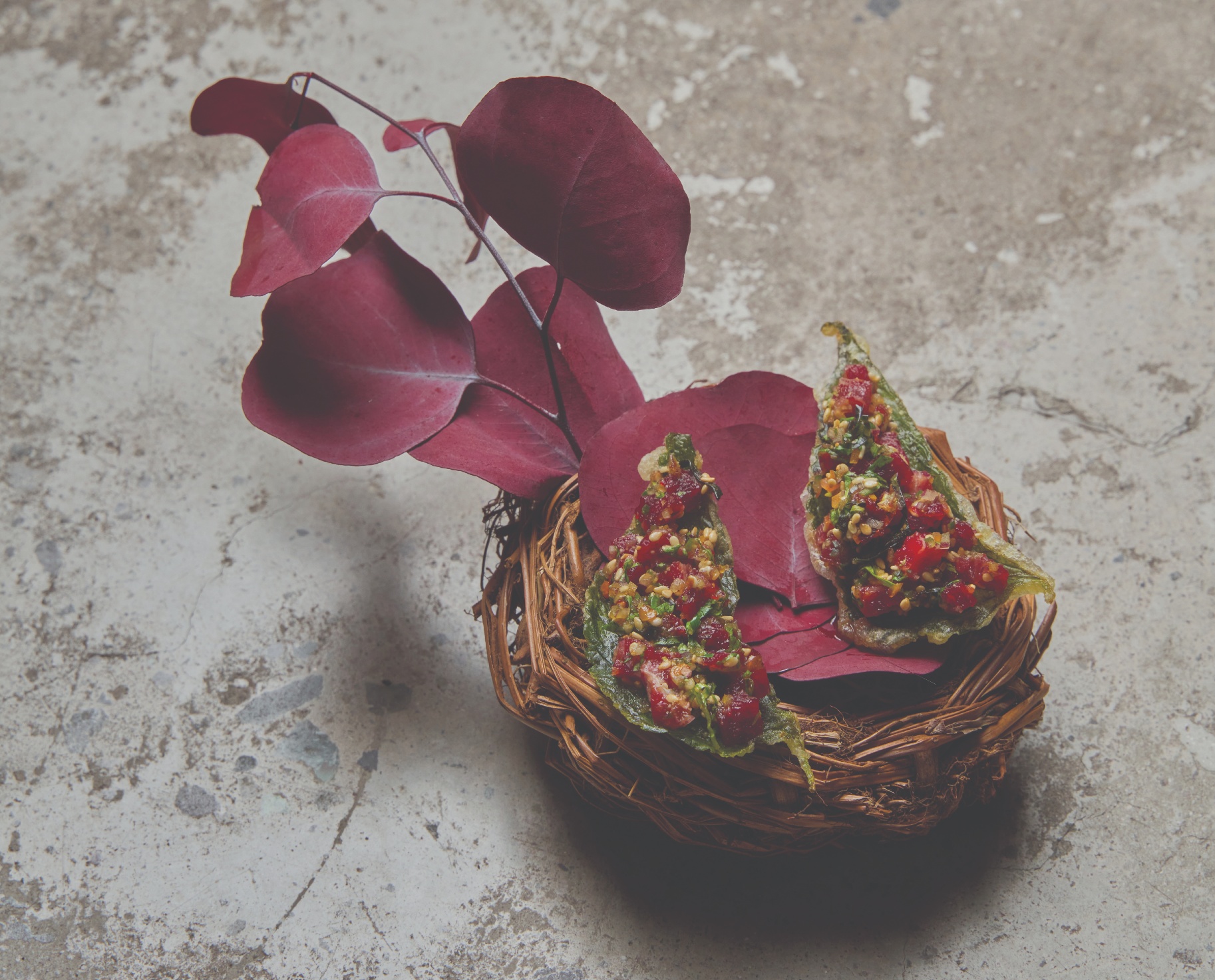In Manila, as well as its nearby provinces, a regional and multi-cultural light is shining on Filipino cuisine and produce in delicious and thoughtful ways.

A sensory Kapampangan feast in the forest, Japanese dishes with Filipino ingredients and flair, and a bold Mexican-Filipino homecoming. Where the past decade was marked by a push of the Philippines into the global culinary limelight, now is where it moves into regional layers and diasporic influences. In Manila, this movement is spearheaded by people who bring their personal stories of living abroad and rarely seen regional recipes to the table, wrapped in warm hospitality and creativity. We check out the forces that are shaping the capital’s culinary landscape in distinctly moving ways.
Thirdy Dolatre and Kevin Navoa, Hapag and Ayà
Tired of stereotypes that portray Filipino cuisine as “just brown food, sour soups, and grilled food on a stick”, chefs Kevin Navoa and Thirdy Dolatre opened Hapag in 2021. Dolatre shared: “Filipino cuisine is alive, evolving, and deeply regional. We want to blend tradition with innovation and highlight overlooked voices.” Last year, the restaurant, whose name refers to convivial table gatherings, relocated to the swanky Balmori Suites in Makati, championing local artisans in its decor and adding a skylit, upper-floor lounge Ayà serving small bites with wines and cocktails.
-and-thirdy-dolatre.jpg)
Their current menu spotlights the food of the West Visayas islands in central Philippines. Showstoppers include batchoy at puto, handmade noodles served in a smoky pork bone broth with sourdough rice cake; and inasal, sticks of grilled chicken, gizzard, and skin served with house-made chili, garlic-infused coconut vinegar, and soy sauce. Rare ingredients are highlighted too: The incredibly smooth and creamy Criollo Cacao Ice Cream uses rare Negros cacao and asin tultul, an organic salt from Guimaras painstakingly made by only one family on the island today ★ hapagmnl.com

Cara Davis, Halong
After 18 years of working in lauded restaurants like New York City’s Eleven Madison Park and Tulum’s Arca, chef-owner Cara Davis returned home and opened Halong, which means “to care and nurture” in Davis’ maternal Ilonggo dialect. Her menu is a tale of Southeast Asian flavours through the lens of her seven-year stint in Mexico, where she had opened her own Asian-Mexican street food playground Mestixa. Davis shared: “Outside the Philippines, our food is often seen as simple home cooking, but it also has depth and complexity.”
.jpg)
Davis reimagines her roots in bold, expressive dishes that balance heat, umami, and acidity, such as a roasted bone marrow marinated with tamarind bagoong (Filipino fried shrimp paste) and spicy Thai nam phrik chilli sauce, with a serving of pickled chayote and smoked chipotle butter on sourdough bread. Another feisty dish: A spicy shrimp aguachile with pickled jalapenos, Morita chilies, and gochugaru prawn crackers. She said: “Every plate is designed to tell a story of the places I’ve been, flavours I’ve chased, and the connections formed around the table” ★ instagram.com/halong.restaurant

Stephan Duhesme, Metiz and Automat
When Stephan Duhesme opened Metiz in 2019, he was adamant about using only local ingredients. The half-French, half-Filipino who has worked around the world since 2013 explained: “We challenge the stereotype that you need foreign ingredients to make amazing Filipino food. Our food is brought down to the essence of the flavours we remember, like combining elements of adobo, tinola, and sinigang in one dish. It feels familiar yet creative.”

Fermentation, pickling, and ageing feature large in dishes such as a pan-fried fish served with a coconut vinegar-based paksiw sauce, mung bean puree, and pig fat. The house-made vinegars pay tribute to the regional traditions of making different varieties according to the fruits in season. Currently under renovation, Metiz will re-open in July with a prix fixe menu of six courses instead of eight, with more sharing options in line with “our dining rituals, habits, and how we enjoy eating”.
.jpg)
Last year, Duhesme opened the rambunctious, communal-style Automat above Metiz. It is the place to dig into a slice of the capital’s indulgent dining culture through dishes like spam omelette in a smoked chili hollandaise sauce and adobo mushrooms on a bed of crispy rice and fontina cheese ★ metizresto.com; instagram.com/automat.mnl
Jorge Mendez, Modan
Jorge Mendez’s love affair with casual Asian dining includes Some Thai, Japanese Ohayo, and a partnership with the late Margarita Forés in her casual Italian chain, Cibo. But he only came into his own with neo-Japanese Modan in 2022. Mendez said: “I love Filipino food, but that’s not what I want to cook. I wanted to challenge myself to do Japanese cuisine here with local produce, which has so much potential and can be used beyond traditional Filipino cuisine.”

For Mendez, less is more in his menu that combines Japanese ingredients with local ones, such as halibut, white marlin, and pompano. It is about finesse, flavour, and a dash of fun in dishes like dabbing a chicken wing stuffed with rice and grilled beef tongue into a mix of shoyu egg yolk, chicken jus, and olive oil, and munching through a snow crab leg made like a corn dog. Modan will move to the 30th story of the upcoming Primex Tower in March 2026, where Mendez will use the expanded 25-seat space to explore preservation, fermentation, and ageing techniques ★ modanmnl.ph
Nicco Santos and Quenee Vilar, Celera
Opened in February, Celera, which plays on the Malay word “selera” for appetite, is fittingly located in the Comuna creative enclave in Makati. Its chef-owners Nicco Santos and Quenee Vilar
are the duo behind some of Manila’s most lauded contemporary Asian restaurants, such as the now-defunct Hey Handsome and Café Aurora. Celera’s dinner-only tasting and a la carte menus are an intriguing roll call of sour, sweet, salty, and umami elements, even in the complex cocktails.

There is beef cheek inspired by Malay and Maranao (a Muslim-Filipino ethnic group living around Lanao Lake in Mindanao) rendang where Santos uses local cashew, macadamia, red chillies, and pig’s blood in the braise; and a duck liver served with local mango, goat cheese, and caviar. But Santos does not want to call it “elevated” cuisine. He emphasised: “Filipino cuisine can have echoes of the past while being fully present in what it is becoming. It is evolving and there is much to unfold.” ★ restaurantcelera.com
